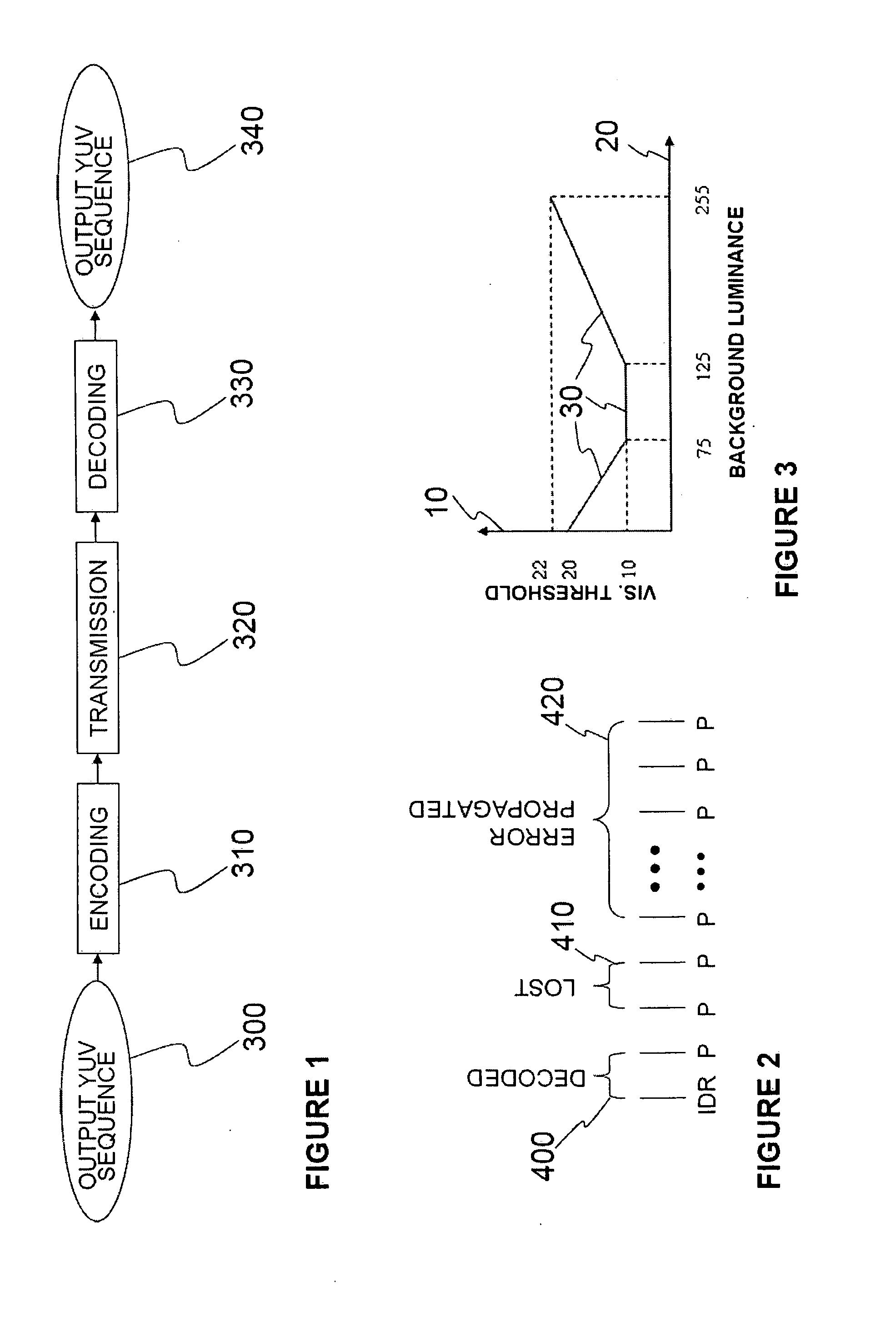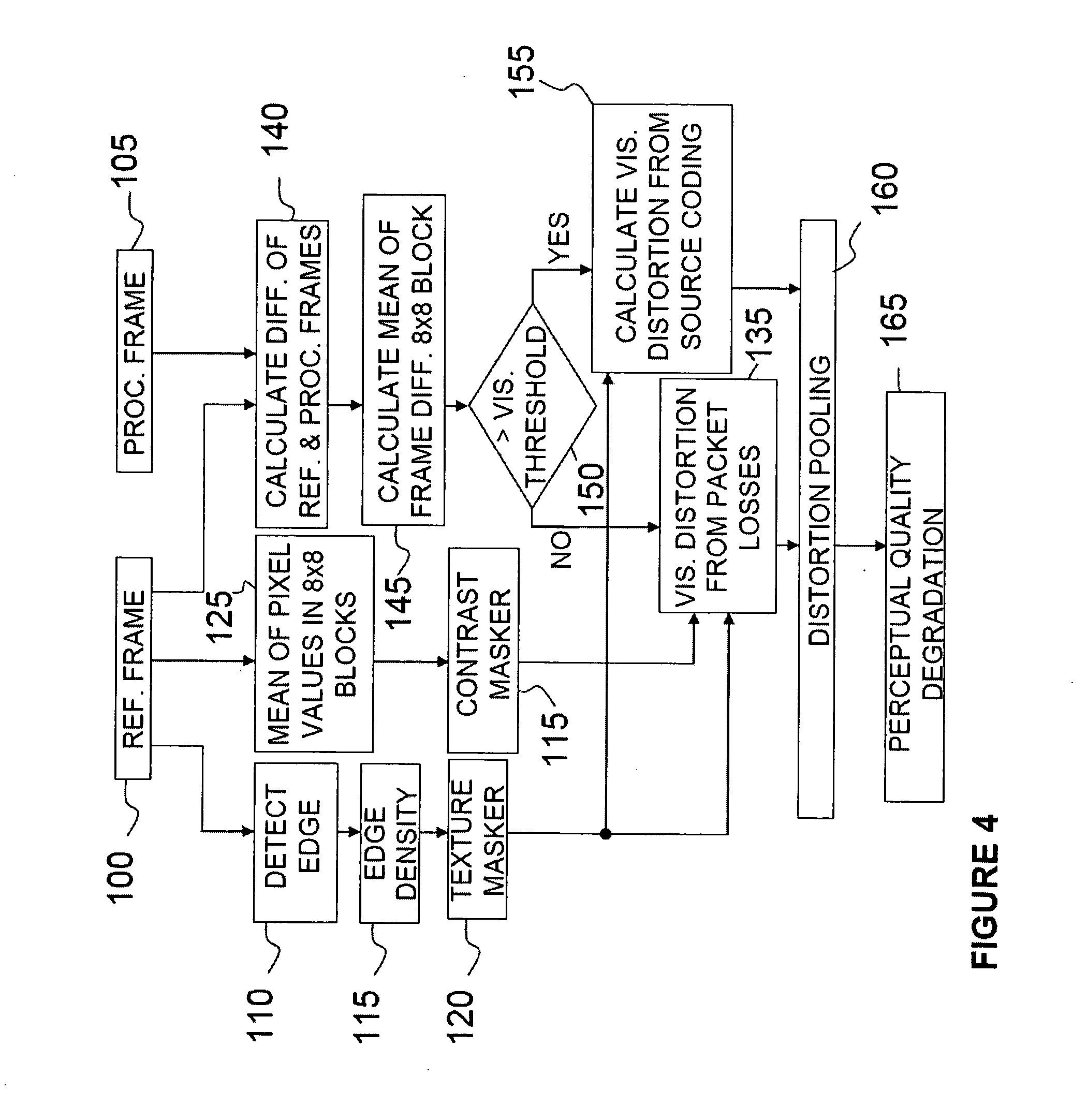Method for assessing perceptual quality
a perceptual quality and objective method technology, applied in the field of full reference (fr) objective method of assessing perceptual quality, can solve the problems of difficult solving this problem, low bandwidth of this wireless communication channel, and degradation of perception quality in the processing of video frames
- Summary
- Abstract
- Description
- Claims
- Application Information
AI Technical Summary
Benefits of technology
Problems solved by technology
Method used
Image
Examples
Embodiment Construction
[0028]The invention will now be described in greater detail. Reference will now be made in detail to the implementations of the present invention, which are illustrated in the accompanying drawings and equations.
[0029]At least one implementation provides a full-reference (FR) objective method of assessing perceptual quality of decoded video frames in the presence of packet losses. Based on the edge information of the reference frame, the visibility of each image block of an error-propagated frame is calculated and its distortion is pooled correspondingly, and then the quality of the entire frame is evaluated.
[0030]One such scheme addresses conditions occurring when video frames are encoded by H.264 / AVC codec, and an entire frame is lost due to transmission error. Then, video is decoded with an advanced error concealment method. One such implementation provides a properly designed error calculating and pooling method that takes advantage of spatial masking effects of distortions caus...
PUM
 Login to View More
Login to View More Abstract
Description
Claims
Application Information
 Login to View More
Login to View More - R&D
- Intellectual Property
- Life Sciences
- Materials
- Tech Scout
- Unparalleled Data Quality
- Higher Quality Content
- 60% Fewer Hallucinations
Browse by: Latest US Patents, China's latest patents, Technical Efficacy Thesaurus, Application Domain, Technology Topic, Popular Technical Reports.
© 2025 PatSnap. All rights reserved.Legal|Privacy policy|Modern Slavery Act Transparency Statement|Sitemap|About US| Contact US: help@patsnap.com



